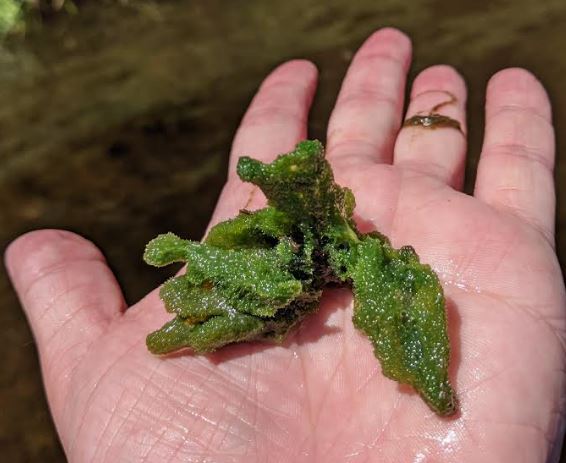
Water Quality Research and Bioaccumulation of Contaminants
Microplastics in Water
Collaborators: Jillian Votava, ISEA
Microplastics enter the environment as a result of a wide variety of human activities. We are currently analyzing samples collected in Suttons Bay and various other locations in the upper Great Lakes collected over several years by our partners at Inland Seas.
Trace Element Accumulation in Freshwater Sponges
Collaborators: Stephen Kolomyjec, LSSU
Freshwater sponges are common throughout Michigan, and have potential utility as bioindicators. As filter feeders, sponges have the potential to bioaccumulate significant quantities of trace elements, but the degree to which various elements are passively accumulated or actively regulated is poorly understood in freshwater species. Further confounding the issue, shallow water sponges are typically colonized by algae and accumulate poorly soluble minerals in their pores. We are currently investigating the mechanisms that control trace element accumulation using a variety of techniques including optical and electron microscopy, µXRF, and ICP-MS. For more information visit: https://sites.google.com/view/s-kolomyjec/


PFAS Accumulation in Fish
Collaborators: Ben Southwell, LSSU; Brian Wesolek, BMIC
Perfluoroalkyl substances (PFAS) are man-made compounds that have been widely used in consumer and industrial products due to their extreme stability. Unfortunately, their stability also makes them extremely resistant to degradation in the environment and has facilitated their bioaccumulation in organisms including fish. We are currently studying the bioaccumulation of PFAS in fish from southeastern Lake Superior (and tributaries) using LC-MS/MS.
Beach Water Quality & Microbial Source Tracking
Collaborators: Ben Southwell, LSSU; Chippewa County Health Department
Beach water quality and pathogen loading has a direct impact on human health and disease risk. While routine beach monitoring is an important public health tool, identifying the sources of contamination is challenging. We address this challenge by applying DNA based microbial source tracking methods (qPCR) to supplement routine monitoring methods such as Colilert-18, allowing us to identify potential targets for water quality improvements which may result in fewer beach closures and reduced economic impact on tourism focused small businesses.

Storm Water Quality
Collaborators: Ben Southwell, LSSU; Jonathan Doubek, LSSU
Storm water quality is often heavily impacted by human activities and transport a variety of contaminants that have potential to affect the biodiversity of aquatic systems. We have studied contaminants such as trace metals, nutrients, road salt, PFAS, etc. in various systems throughout northern Michigan.


